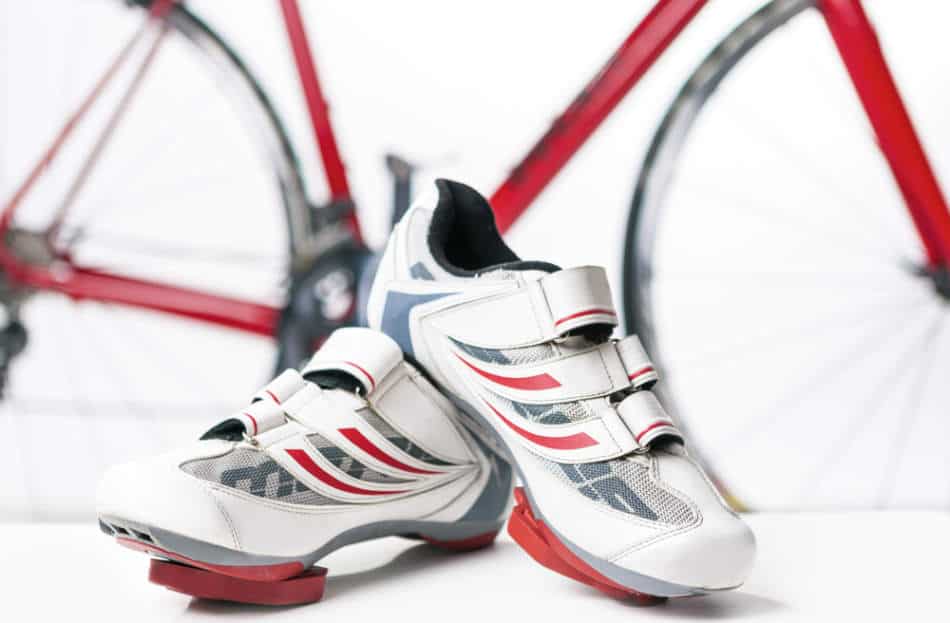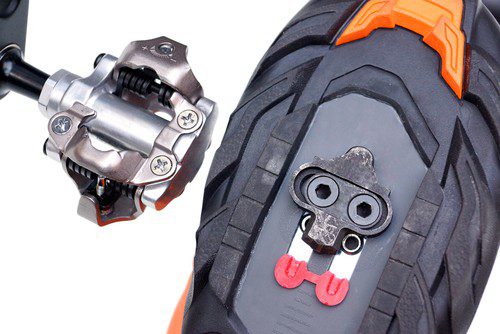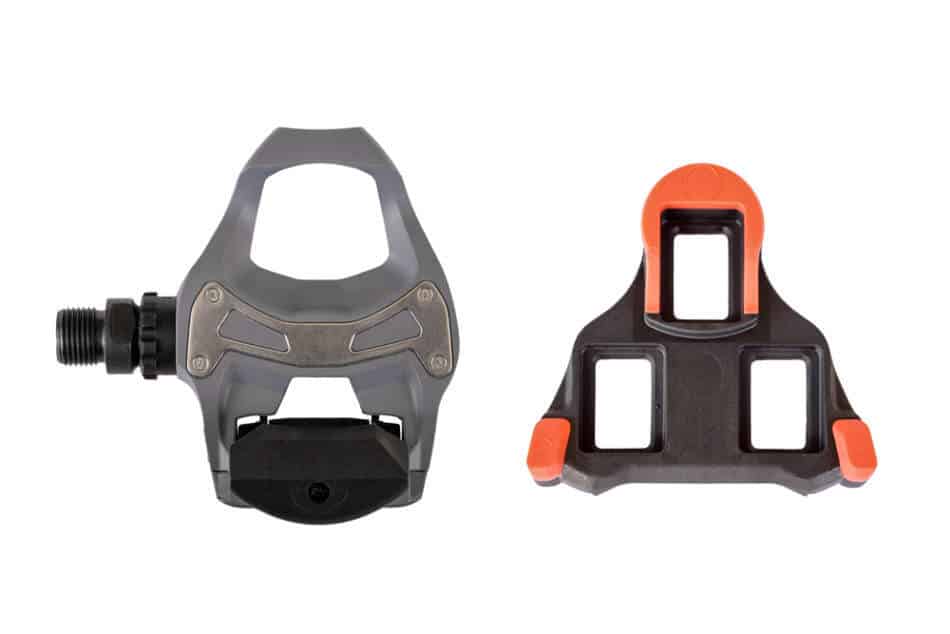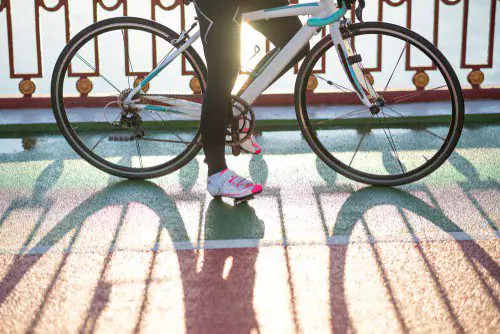Road bikes are made for those with a need for speed. Their purpose is to provide a rider with the most comfortable journey that’s possible while traveling as fast as they want to. The entire bicycle, right down to the pedals, is factored into the comfort and speed. Modern road bikes feature pedals with cleats that fit with cycling shoes, this maximizes both comfort and speed.
But, do road bike pedals come with cleats? Yes, sometimes, the cleats and pedals come together. But, sometimes, they come separately, depending on the level of customization you’re looking for.
Road bike pedals are fairly customizable, with a few different styles to choose from, according to the rider’s specific needs. This will factor into the cleats that will fit with each specific set of pedals. So, if you’re new to the world of road cycling, keep reading for a little more info on the wide world of pedals and cleats.
Pedals & Cleats
When I first dipped my toe in the road bike waters, I was surprised to learn that bikes don’t just come with pedals and that there are special shoes to go with road bike pedals. I thought I was going to get a new bike and ride away into the sunset, so to speak.
But, there’s quite a bit more to the pedals on a road bike, and I wish it was something I’d learned about before I went to the cycling store. So, let me brief to save you some of the shock and awkwardness of not knowing, like me.
Clipless Bike Pedals
There are two kinds of pedals in the cycling world: clipless and flat. Flat pedals are the kind that I was used to and are most common on mountain bikes and children’s bikes. Since we’re focused on road bikes, we’re going to save flat pedals for another day, and focus on the “clipless” pedals.
When you hear “clipless,” it suggests that you might be, well, not clipping anything. But, oddly enough, using clipless pedals is actually called “clipping in.” So, there’s a fair amount of clipping in clipless pedals, if that makes sense.

Clipless pedals feature two or three spring-loaded clips that your shoes will “clip in” to. Whether or not your pedals have two or three holes depends on how many cleats you have on your shoes, more on that later. Clipping in on a road bike pedal refers to the process of snapping your shoes’ cleat into place on the pedal.
Why Go Clipless
Since road bikes are mainly used for distance and speed, it’s important that there’s a certain level of control within the pedals. Too much freedom for feet to slip and slide around is uncomfortable, not to mention, dangerous. That’s where clips come in.
Although the thought of your shoes being bound to the pedals is a little scary, especially for those that aren’t exactly the most coordinated, it’s actually much easier to clip in and out. And, in the long run, the safety of keeping feet on the pedals is much better than not.
In the beginning, clipping in will take some practice. Many experienced riders recommend practicing while sitting on your bike while steadying yourself with one hand against a tree or railing of sorts. Getting down the clipping in and clipping out motion while you’re not only relying on two wheels is a safer option than waiting until you’re on the road at a stoplight.
Road bikes are traditionally used for racing, and even commuting. Both are contingent on timing, so having efficient pedals is important. Ensuring that each motion of the pedals produces maximum energy is key, so the connection between the feet and the pedals is important. Clipping in helps with that.
Cleats
There are two styles of cleats that are typically used with road bikes: two-hole cleats and three-hole cleats. Here’s a quick briefing on both options.
Two-Hole Cleats
These are the choice of most recreational road bike riders or commuters. Shoes with two cleats still offer a lot of foot control and increased leverage, as opposed to a flat pedal. But, because there are just two cleats, these are a tad bit easier to walk on.
A two-hole cleat design also offers recessed cleats. Again, making them a good choice for anyone that has to walk on these shoes for any amount of time. The sole of a two-hole design is also fairly stiff, so while they’re great for riding, they’re not ideal for long walks.

This style of cleats is usually for mountain bikes but are occasionally used by recreational cyclists riding road bikes. There are also some commuters that prefer the two-hole design over the three-hole.
Three-Hole Cleats
Three-holed cleats offer added leverage because they’re incredibly stiff. But the stiffness also makes them ideal for road bike riding – but not for walking, though. The three-hole cleats aren’t recessed, so they’re extra difficult to walk in. Although, with some practice, you can learn to do it without tipping over. But still, it’s not the most graceful way to walk around.

There is also no tread on the soles of three-hole cleat designs. This is great for the cycling aspect of the shoes, but again, not for walking. Since these are only designed to better your cycling experience, it’s always just best to stick a pair of regular shoes in your backpack.
Due to the stiffness of the shoe and the lack of walking comfort, these are best used by road bike riders that are competitive. But, just like everything, there are exceptions here and there, and some recreational cyclists just prefer the secure feeling of being locked in by three cleats instead of just two.
How to Choose Pedals and Cleats
The cleats depend on what style of pedal you go with. And, the pedal also largely depends on the cleats. You can’t do one without the proper version of the other. Needless to say, the cleats and pedal combo isn’t just something you can dive into, there’s quite a bit of thought involved. Here are a few things to ponder while deciding your own cleats and pedals…
Brand Consideration
There are not a lot of compatibilities across cycling brands. One brand of cleats won’t work with another’s pedals, and vice versa. This is helpful to know if you’re brand new on the road bike scene.
Some brands also color code their cleats and pedals, making it easier to choose the ones that are right for you. The color code identifies the level of float that each combo allows. Float is the amount of wiggle room, so to speak, or lateral rotation that’s allowed when you’re clipped in.
Float
Now that we’ve mentioned float, it’s important to consider how that will affect your own riding style and purpose. The less float, or give, you have in the pedal, and shoe connection, the more fixed into place your shoes will be.
This is very specific to the individual rider, and having a mismatched float can be painful, and over time cause knee injuries. To make sure your float is appropriate for you as a rider, going to a professional cycling shop is recommended.
Experience
Many experienced cyclists recommended starting with a two-hole cleat and pedal combo because it’s slightly easier to learn to clip into. Also, the need for a stiff shoe and maximum speed isn’t as important if cycling is purely recreational.
Other articles you may find interesting:
Can You Use Cycling Shoes Without Cleats?

